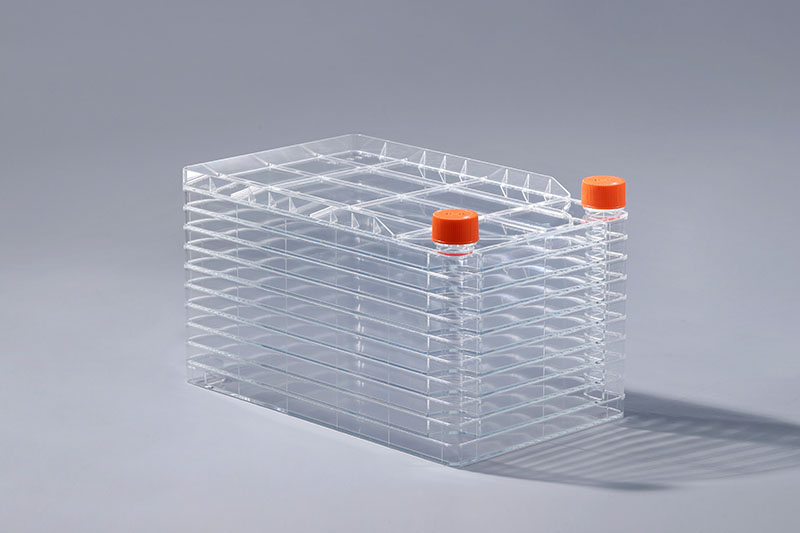The cell factory is one of the commonly used consumables in the field of biological research, suitable for industrial mass production and large-scale cell culture, such as vaccines, monoclonal antibodies or the pharmaceutical industry. Cells are very sensitive to the environment, so sterilization of consumables such as cell factories is an essential process before use.
Commonly used sterilization methods include ethylene oxide sterilization, high pressure steam sterilization, irradiation sterilization, etc. The sterilization method of the cell factory selects a relatively special electron beam sterilization, which belongs to one of the irradiation sterilization methods. Electron beam sterilization is the use of electron beam rays to destroy the DNA of product microorganisms, so as to effectively inhibit the reproduction of microorganisms, disinfect and sterilize, and prevent mildew, insects, and preservatives. This sterilization method has the following characteristics:
1. Pure physical radiation sterilization without adding any chemicals, no radiation residue after turning off the power supply, and the product only accepts the energy of radiation, which is a relatively environmentally friendly sterilization method at present, especially suitable for food and medicine, not suitable for high temperature sterilization and high sterilization The product.
2. Electron beam sterilization is carried out at room temperature. It is a physical cold processing category. It is suitable for products that cannot be sterilized by high temperature and high pressure chemical sterilization, and has relatively little side effects on the products.
3. Electron ray sterilization can treat all kinds of microorganisms inside the product in compartments, because the rays have strong penetrability. When the microorganisms in the finished product exceed the standard, it is very convenient and efficient to use this technology to deal with it. The finished product can be solved by sending it to electron beam sterilization.
4. Thorough sterilization. Electron beam sterilization can effectively kill all kinds of microorganisms, eggs and larvae, pathogenic bacteria, etc. It is generally suitable for the disinfection and sterilization of food, drug and cosmetics. realized.
5. The sterilization is flexible. Electron beam sterilization can achieve the microbial compliance requirements by formulating the corresponding sterilization intensity through the initial microbial data of the product and the standard after sterilization.
The cell factory adopts electron beam sterilization method to sterilize thoroughly and without residue, which effectively guarantees the sterile characteristics of consumables and meets the requirements of cell culture for the environment. It is a typical representative of modern disinfection and sterilization technology.
The FAI climbed 5.9 percent year-on-year in the first 11 months of 2018, quickening from the 5.7-percent growth in Jan-Oct, the National Bureau of Statistics (NBS) said Friday in an online statement.
The key indicator of investment, dubbed a major growth driver, hit the bottom in August and has since started to rebound steadily.
In the face of emerging economic challenges home and abroad, China has stepped up efforts to stabilize investment, in particular rolling out measures to motivate private investors and channel funds into infrastructure.
Friday's data showed private investment, accounting for more than 60 percent of the total FAI, expanded by a brisk 8.7 percent.
NBS spokesperson Mao Shengyong said funds into weak economic links registered rapid increases as investment in environmental protection and agriculture jumped 42 percent and 12.5 percent respectively, much faster than the average.
In breakdown, investment in high-tech and equipment manufacturing remained vigorous with 16.1-percent and 11.6-percent increases respectively in the first 11 months. Infrastructure investment gained 3.7 percent, staying flat. Investment in property development rose 9.7 percent, also unchanged.
 English
English



















































